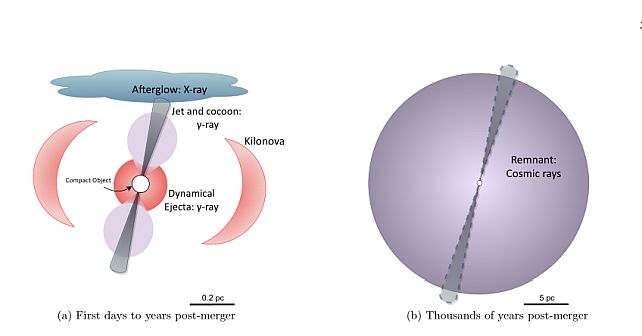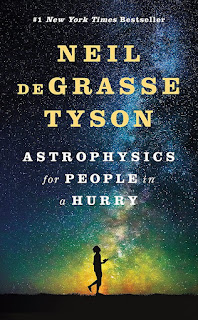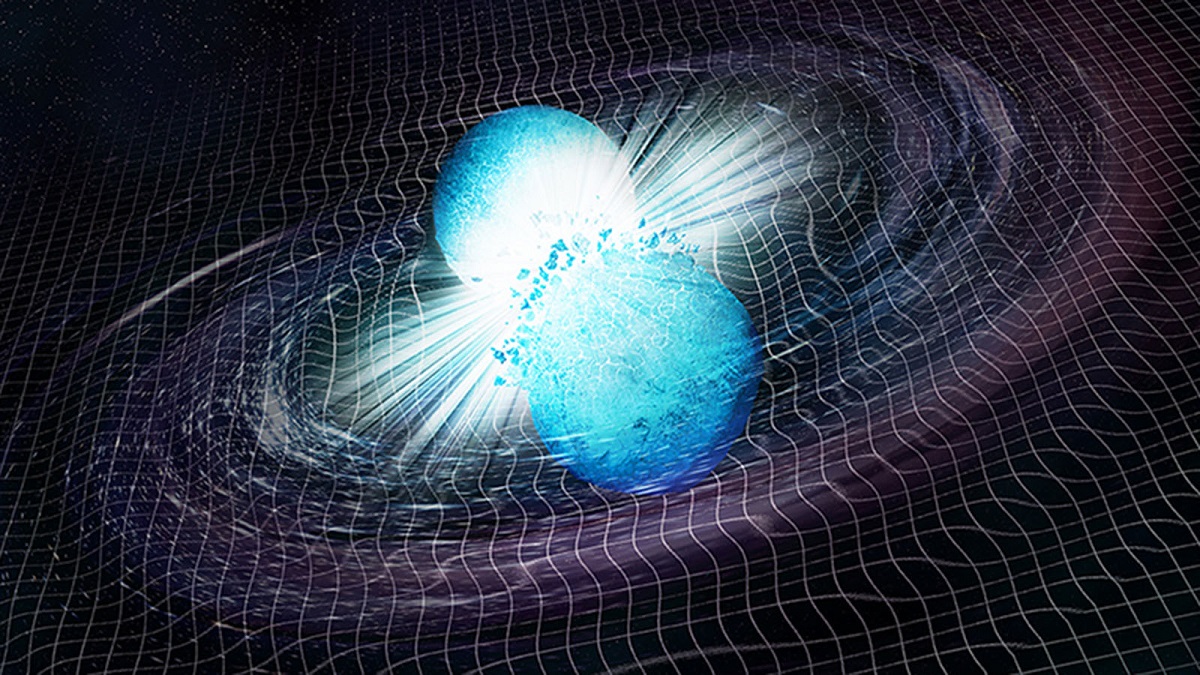A collision between two neutron stars, tightly bound on a decaying orbit, appears to be a relatively rare event. In the entire Milky Way galaxy, of all the 100 billion stars, scientists reckon there’s only around 10 neutron star binaries destined for a collision.
To date, we’ve only detected a handful of the kilonova explosions that follow such a collision, and none in our own galaxy. But what if there were a kilonova in the Milky Way? What would that mean for life on Earth?
According to a team led by physicist Haille Perkins of the University of Illinois Urbana-Champaign, nothing too good, if the explosion was within a certain proximity. This information probably isn’t going to help much if two neutron stars did collide nearby – but it’s nice to know just how deadly space can be.
The team’s findings, uploaded to preprint server arXiv, suggest that the biggest danger comes from cosmic rays, if we’re not in the path of the kilonova’s gamma-ray burst, up to a distance of 35 light-years. If we are in that path, we get a fatal proximity of 300 light-years – but we need to be in exactly the right spot.
This helps us assess threats to our own existence, but also will allow scientists to determine the likelihood of life surviving on alien worlds in proximity to these star-shattering events that erupt with powerful, atmosphere-stripping radiation.
Binary neutron star collisions – based on the scant handful we have observed – have several components.
There’s usually a short-duration burst of gamma radiation (the supernovae of collapsing single stars are longer), erupting out in a pair of narrow jets on either side of the colliding stars, as well as gamma-ray cocoons around each jet, which form as the jet tries to punch through material shed during the kilonova.
When the jets slam into the surrounding interstellar medium, they produce powerful X-rays; that’s known as the X-ray afterglow. And, as the situation evolves over years to centuries, a bubble of cosmic rays expands out into space from the center of the collision.
Perkins and her team investigated how these events could affect a planet, based on what we know from the first neutron star collision ever detected, GW170817.
They found that any living thing within the narrow range of the jet out to a distance of 91 parsecs – 297 light-years – is probably toast due to the powerful gamma radiation. Outside of that narrow range, however, it is somewhat safer. You’d need to be within a distance of around 13 light-years to be hit by gamma radiation from the cocoon structures.

Both these threats would only persist for a short time; they’d strip Earth’s stratospheric ozone, which would take about four years to recover. The X-radiation, the team found, is much more lethal, as the afterglow lasts much longer than the gamma-ray emission. However, you’d still need to be relatively close – within about 16 light-years.
It’s the long-term bubble of cosmic rays that pose the most significant threat, the researchers found. Accelerated by the kilonova remnant, these would strip the ozone, leaving Earth vulnerable and pelted with radiation, for a duration up to thousands of years. That would trigger a devastating mass extinction. For that, we’d need to be within about 35 light-years from the source.
So we’re probably relatively safe from this kind of death, for now. In fact, we’re far more at risk from something right here in the Solar System: giant flares from our own Sun. After that, we should worry about asteroid impacts, and then supernovae. Kilonovae are, in this list at least, the least of our worries, despite the dangers they can pose.
“The rarity of binary neutron star mergers combined with a small range of lethality means that they are probably not important threats to life on Earth. We find that the mean recurrence time of lethal mergers at the location of the Sun is much larger than the age of the Universe,” the researchers write.
“However, even if it never induced a mass extinction, a nearby kilonova event would be visible on Earth. It would likely disrupt technology soon after the merger and remain bright in the sky for over a month.”
Well, that’s something to look forward to at least.
Discover:

Astrophysics for People in a Hurry
$9.48 (30% off)
The essential universe, from our most celebrated and beloved astrophysicist.

